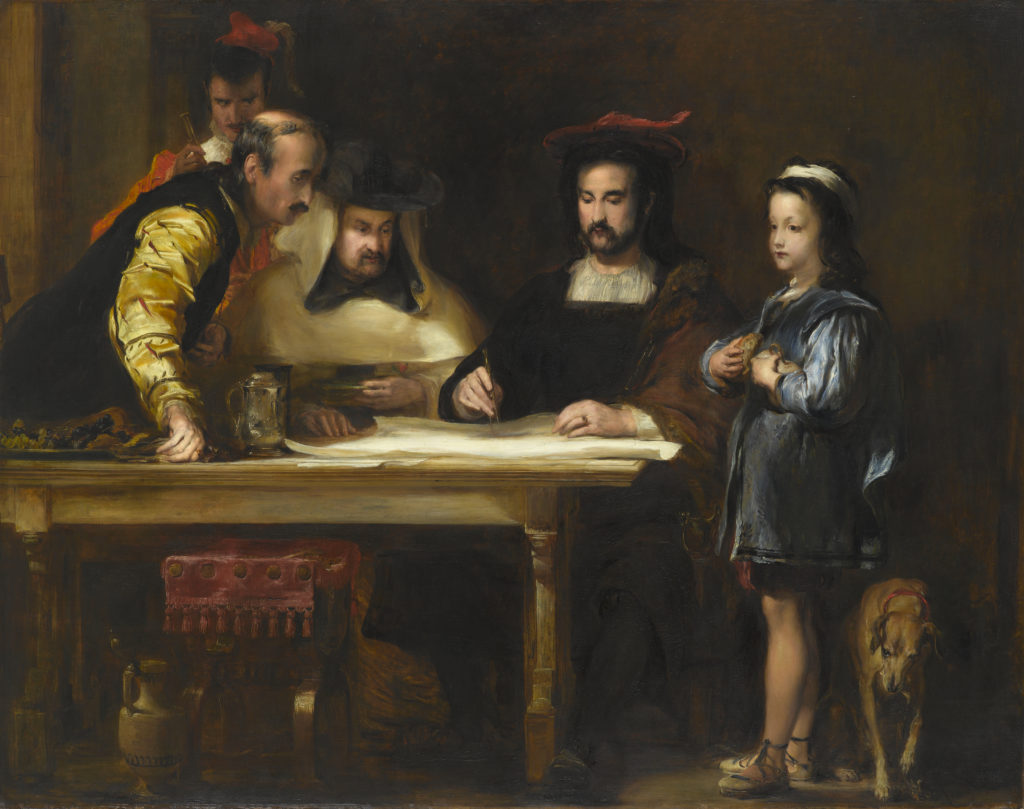Christopher Columbus in the Convent of La Rábida Explaining His Intended Voyage (work of art)
Artwork Info
Key Ideas
- Scottish painter Sir David Wilkie painted genre scenes, or events from everyday life.
- Wilkie painted this “imagined portrait” of Christopher Columbus planning his voyage to open new trade routes with India and East Asia. The journey he was about to go on was paid for by the Spanish king and queen.
- The artist created this painting more than 300 years after Columbus died.
- Columbus set out across the Atlantic Ocean to find a new trade route to East Asia and India and bring back valuable silks and spices. The establishment of this trade route brought immense wealth to Western Europe and led to the slave trade between Europe, Africa, and the Americas.
Learn More
This is an imagined portrait of Christopher Columbus in 1491. He died more than 300 years before this oil painting was created. It depicts Columbus planning his voyage to open new trade routes to East Asia and India. The portrait commemorates his stay at La Rábida Monastery. The monastery is where Columbus found out that the king and queen of Spain were going to fund his voyage.
Columbus’s 1492 voyage landed him in the Bahamas, which he claimed for Spain. He continued his voyages around North America, paving the way for European countries to colonize and exploit Indigenous peoples and their natural resources. European colonizers became extremely wealthy and powerful while the people they exploited were devastated by disease and war. The routes Columbus opened led to the slave trade between Europe, Africa, and the Americas.
Sir David Wilkie is best known for his genre paintings. He often painted historical scenes, scenes from his travels, and people of great wealth and power. He was appointed painter to the King of England in 1830. Wilkie created this painting at a time when many people saw Columbus’s actions as heroic. The legacy of Columbus as an explorer who “discovered” the New World has been challenged in modern times. His legacy has been revised to include the devastating effects of European colonization on Indigenous peoples.
Additional Resources
Resources for Teachers:
- Read the artist’s biography.
- Read an article about ways to engage students in conversations about the controversial legacy of Christopher Columbus.
- Read Columbus’s letter to King Ferdinand II and Queen Isabella I requesting funding for his voyage to the Americas.
Resources for Students:
- Explore a website to learn more about the La Rábida monastery and the events that took place there.
- View another painting by Sir David Wilkie.
- Watch a video about the controversial use of Native American imagery in sports.

